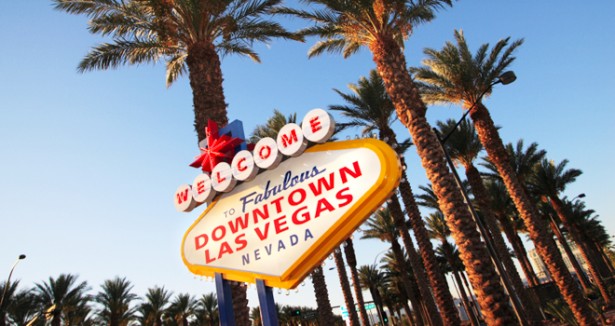Fremont Street

Every city in America has a main street. Many European cities do, too, but as many of them are round it’s sometimes hard to tell which it is. But that’s not a problem in Las Vegas. Fremont Street is it. Of course, those who walk The Strip will argue. But visit Fremont Street and you’ll be convinced. New York has Times Square at Broadway where the neon lights astound visitors. Paris is appropriately nicknamed the City of Lights. But Las Vegas is unique. Nowhere outside Asia can you find such a dazzling array of sights and sounds, with crowds to match.
Housed under a permanent canopy, the casino-lined street has over two million lights and a state-of-the-art sound system. The combined effect is, well, electric. Under the $70 million canopy walk a million visitors a year, if ‘walk’ is the proper term. On many nights, it’s more like being the ball in a pinball game. Not that it’s overcrowded, it’s just that you spend so much time trying to take in all the sights, you have to bump shoulders fairly frequently.
Ninety feet above your head there are 12.5 million synchronized LED lights producing millions of color combinations, accompanied by animation and video. One second it may be a TV broadcast, the next an indefinable kaleidoscope that pops your pupils. Among the better known signs is Glitter Gulch’s Vegas Vickie, exemplifying everything that is Las Vegas. Kitsch, fun, carefree and silly. Videos are projected onto the canopy, too. Some last several minutes and run the gamut from ‘The Drop’, a psychedelic ‘happening’ ala the ’60s, to ‘Area 51′, showing earthlings in battle with aliens. ‘Above and Beyond’ gives visitors a view of the Earth from outer space, while ‘Fahrenheit at Night’ displays some of what Vegas is best known for: beautiful women.
There are dozens of shops, everything from small indoor venues to free standing kiosks. Many of the offerings are just what you’d expect – little trinkets that will break the first time your child goes to play with it. But there is the odd interesting item here and there. If nothing else you can grab a doughnut at Krispy Kreme and enjoy the sights from the outdoor patio. The canopy is 1,400 feet (about 1/4 of a mile), so you’ll have plenty of opportunity to miss something interesting. Better plan to go twice, at least once when you’re sober.
read more
Las Vegas Weather

Contrary to what some people think, Las Vegas weather does have four seasons. Yes, the seasons are different than you would experience in a Northern state, but they exist nonetheless. Let’s take a look at what they are like.
Normal high temperatures in Las Vegas, in the middle of Winter, are around 55 degrees farenheit. Daily normal lows hover around 35. Lows have been recorded as low as 8 degrees. Temperatures into the 80s have been recorded in March as Winter was ending. Las Vegas hasn’t has a major snowstorm in years, but in January 1979 Las Vegas received 9.9 inches of snow, and in January 1949 Las Vegas was hit with 16.7 inches! January and February tend to be rainier than most months, but they still average well below an inch of rain.
The normal high for Las Vegas in Spring starts around 70 degrees, and by the time Spring is ending the average high is 100. Temperatures as high as 116 have been measured near the end of Spring, that’s just a degree short of the highest temperature measured in Las Vegas in the past 80 years. Spring is particularly dry in most years, with less than half an inch, on falling in the months of April, May, and June combined. Humidity is also low, and bottoms out in June.
The normal high for Summer in Las Vegas is over 100, although is dips below 100 after September 1. Humidity increases in July and August, and the number of thunderstorms increases to about 3 per month for those two months. Lows have been measured in the 50s in September, but 80s is normal for July and August, dipping into the 70s in mid September.
The temperatures in Fall decrease faster than they increase in Spring. The daily average temperature on September 1 is 99, by December 1 its 60. If someone tells you they were swimming and sunbathing in Las Vegas in the Fall it was probably not late Fall. Rain levels are lower than they are in January, February, July or August.
There are two weather phenomenon that can be potentially dangerous in Las Vegas (three if you consider the rare but potentially crippling snowstorms). One is wind. Wind can happen any time of year, and gusts into the 90s have been recorded in the flat, open valley that Las Vegas is situated in. Wind is rarely life threatening, but its strong enough that you should take it into consideration when enjoying the outdoors here. The other, more serious problem, is flooding. Rain amounts that wouldn’t raise an eyebrow in many locations can cause flash flooding in Las Vegas. Besides having hard ground that isn’t very absorbent, Las Vegas is in a bowl-like valley, surrounded by mountains. Water runs from on high and accumulates in low lying areas. Pay attention to flash flood watches and warnings, and unless its an emergency stay off of the roads during a flooding situation.
read more




Follow Us!